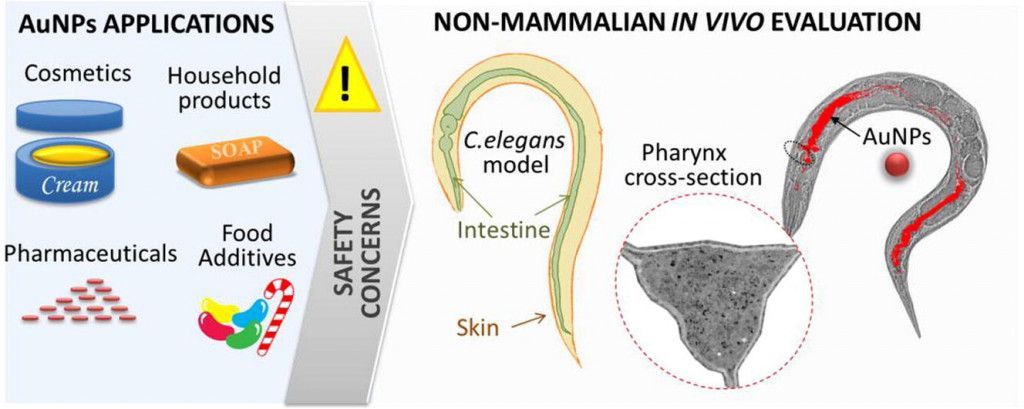
Accepted paper in Acta Biomaterialia on testing gold nanoparticles in vivo using C. elegans
 The paper “In vivo testing of gold nanoparticles using the Caenorhabditis elegans model organism” has been publised in Acta Biomaterialia (Available online 1 February 2017; doi: 10.1016/j.actbio.2017.01.080).
The paper “In vivo testing of gold nanoparticles using the Caenorhabditis elegans model organism” has been publised in Acta Biomaterialia (Available online 1 February 2017; doi: 10.1016/j.actbio.2017.01.080).
The authors of the paper are Laura González-Moragas, Pascal Berto, Clara Vilches, Romain Quidant, Androniki Kolovou, Rachel Santarella-Mellwig, Yannick Schwab, Stephen Stürzenbaum, Anna Roig, and Anna Laromaine.
The paper is a result of a collaboration between the NN Group at ICMAB (González-Moragas, Roig and Laromaine), the ICFO-Institut de Ciències Fotòniques (Berto, Vilches and Quidant), the European Molecular Biology Laboratory, EMBL in Heidelberg, Germany (Kolovou, Santarella-Mellwig, Schwab) and King’s College London in UK (Stürzenbaum).
Congratulations!
Abstract:
Gold nanoparticles (AuNPs) are present in many man-made products and cosmetics, and are also used by the food and medical industries. Tight regulations regarding the use of mammalian animals for product testing can hamper the study of the specific interactions between engineered nanoparticles and biological systems. Invertebrate models, such as the nematode Caenorhabditis elegans (C. elegans), can offer alternative approaches during the early phases of nanoparticle discovery.

Here, we thoroughly evaluated the biodistribution of 11-nm and 150-nm citrate-capped AuNPs in the model organism C. elegans at multiple scales, moving from micrometric to nanometric resolution and from the organism to cellular level. We confirmed that the nanoparticles were not able to cross the intestinal and dermal barriers. We investigated the effect of AuNPs on the survival and reproductive performance of C. elegans, and correlated these effects with the uptake of AuNPs in terms of their number, surface area, and metal mass. In general, exposure to 11-nm AuNPs resulted in a higher toxicity than the larger 150-nm AuNPs. NP aggregation inside C. elegans was determined using absorbance microspectroscopy, which allowed the plasmonic properties of AuNPs to be correlated with their confinement inside the intestinal lumen, where anatomical traits, acidic pH and the presence of biomolecules play an essential role on NP aggregation. Finally, quantitative PCR of selected molecular markers indicated that exposure to AuNPs did not significantly affect endocytosis and intestinal barrier integrity.
accepted paper, Acta Biomaterialia, Anna Laromaine, Anna Roig, Au NPs, C. elegans, evaluation, gold nanoparticles, in-vivo, Laura González, PCR

